Johannesburg has busily redefined itself over the past decade, breathing new life into old warehouses and derelict buildings, while slowly reclaiming sidewalk spaces for markets, cafes, and art galleries.
This resurgence has created unique opportunities for people who travel here. You can go on a bike tour in the morning, have lunch with the hipsters over gourmet burgers, catch a Warhol exhibit and spend the evening listening to storytellers on the roof of a building downtown.
Here are some of the most essential places to see during a visit to South Africa’s city of gold:
Constitution Hill
The ramparts that surround the hilltop in central Johannesburg once contained a feared prison that held Mohatma Gandhi and Nelson Mandela (though not, of course, at the same time). After the end of apartheid, the notorious site was transformed into the highest court in the land.
The old cells became a museum, and the ramparts a walkway overlooking the skyline. Outside the chambers of the Constitutional Court, artwork lines the corridors, interpreting the freedoms enshrined in South Africa’s Bill of Rights.
Lebo’s Soweto Backpackers
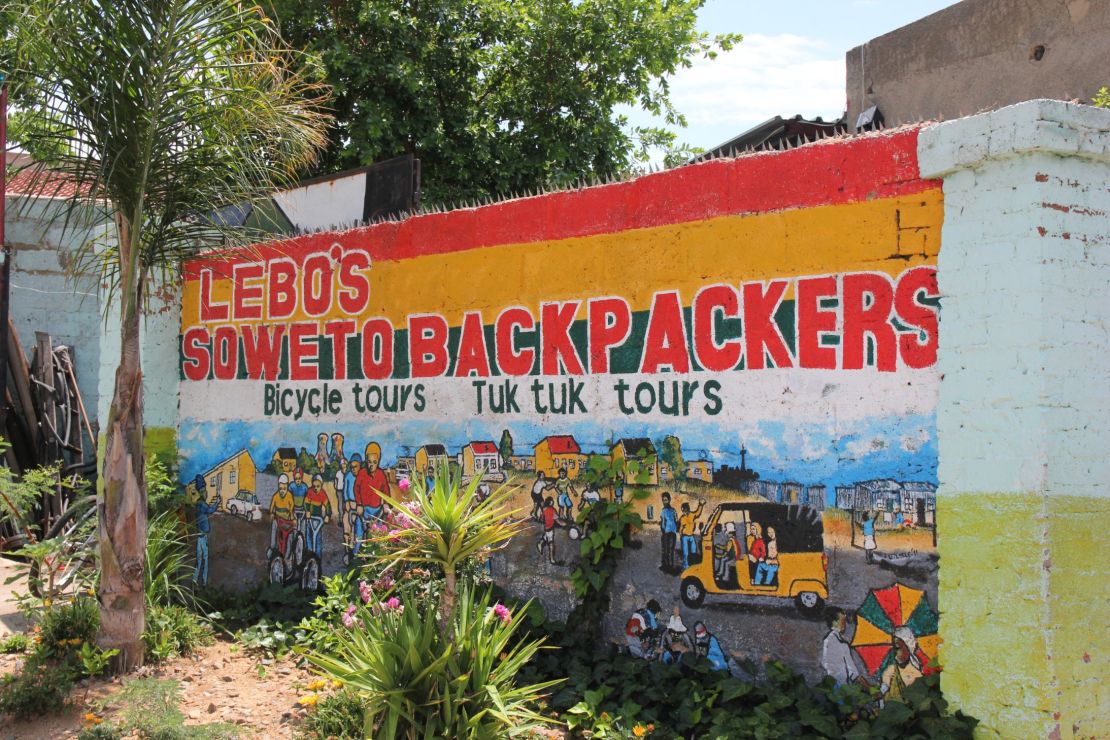
Lebo’s is so much more than just a hostel. Located in Orlando West, the most-visited neighborhood in Soweto, it’s a charming place to stay and has become a center for exploring the streets of the township.
The backpackers organizes tours by bicycle and by tuk-tuk that take in the tourist highlights, but also in workers’ hostels, churches and community centers that give a sense of the rhythm of life.
Founder Lebo and his family have transformed an open field across the street from their home into a a visitor’s center and restaurant that serves up homestyle cooking, including bunny chows (curry in a bread loaf), potjies (cauldrons of stew) and of course a braai.
Lebo’s Soweto Backpackers, 10823A Pooe Street, Orlando West Soweto; +27 11 936 3444
Brunch at the Westcliff
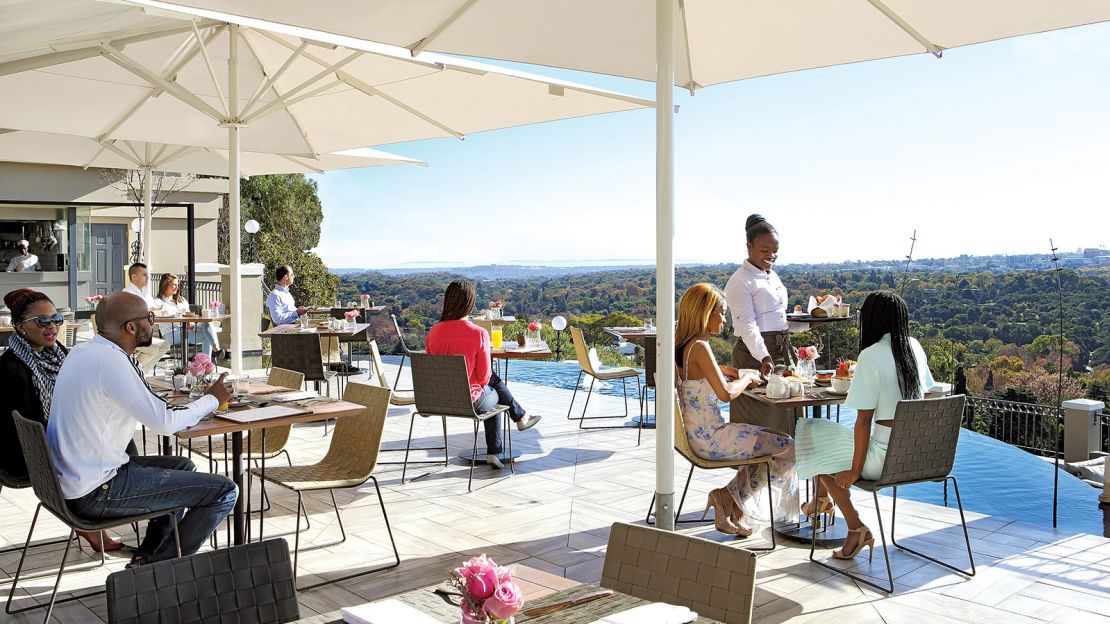
This luxury hotel rises over a hillside in a part of town that was built as the residential playground for the city’s gold rush mining barons.
The Westcliff was recently bought by the Four Seasons, which painted over its trademark pink walls in favor of more muted shades of grey. The restaurants – and their menus – have been given a modern facelift, but still serve decadent meals with views over the city’s northern suburbs. On a good day, diners can see the elephants roaming in their pens at the nearby zoo.
Four Seasons Hotel The Westcliff, 67 Jan Smuts Avenue, Saxonwold 2132, Johannesburg; +27 (0)11 481 6000
Dinner at the Saxon Hotel
Top South African chef Luke Dale-Roberts has set up a restaurant at the Saxon Hotel, one of the city’s toniest hideaways favored by visiting celebs who like to ensconce themselves in the compounds vast gardens. It’s hard to find a more beautiful spot for a sundowner, followed by an unrivaled tasting menu at Luke Dale-Roberts at the Saxon (guests take a small, private elevator up to the dining room). The wine pairings are as exquisite as the food.
The Saxon, 36 Saxon Road, Sandhurst 2196, Johannesburg; +27 (0) 11 292 6000
Vilakazi Street
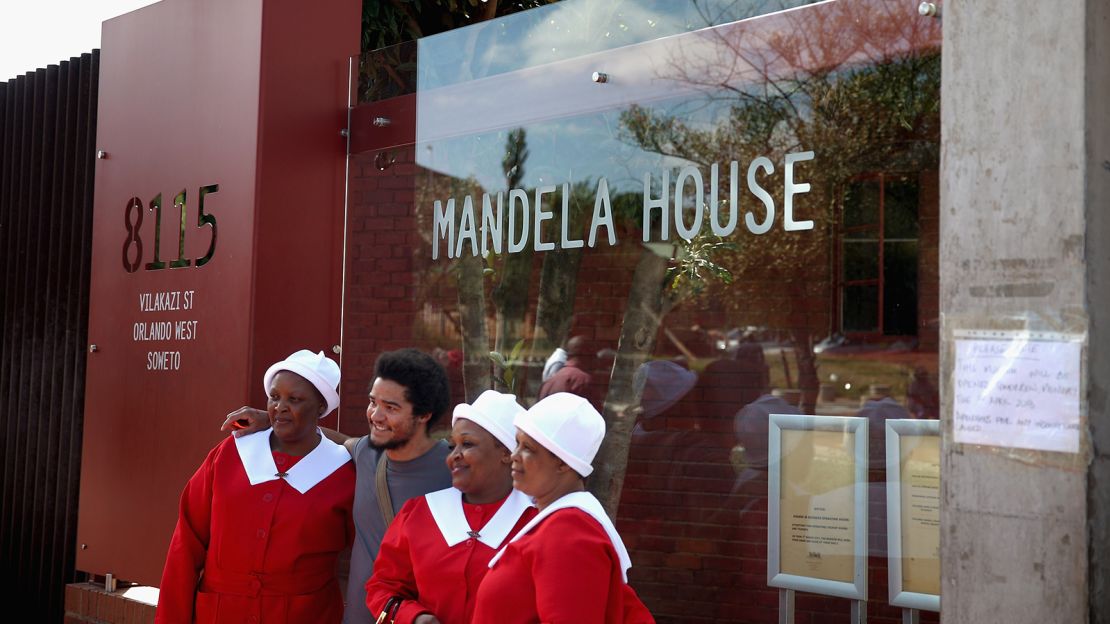
This two-lane road in Soweto connects the residences of two South African luminaries: Nelson Mandela and Archbishop Desmond Tutu.
That makes it the only street in the world that’s been home to two Nobel Peace Prize winners. Mandela’s house, where he returned after his release from prison, is now a small museum holding intimate mementos of his family life. Tutu’s is still a private residence.
Visiting the museum doesn’t take long, but it’s impossible to see Soweto without stopping at its most iconic addresses.
Other homes along the road have been transformed into restaurants, from homestyle buffets to a swanky wine bar.
Hector Pieterson Memorial
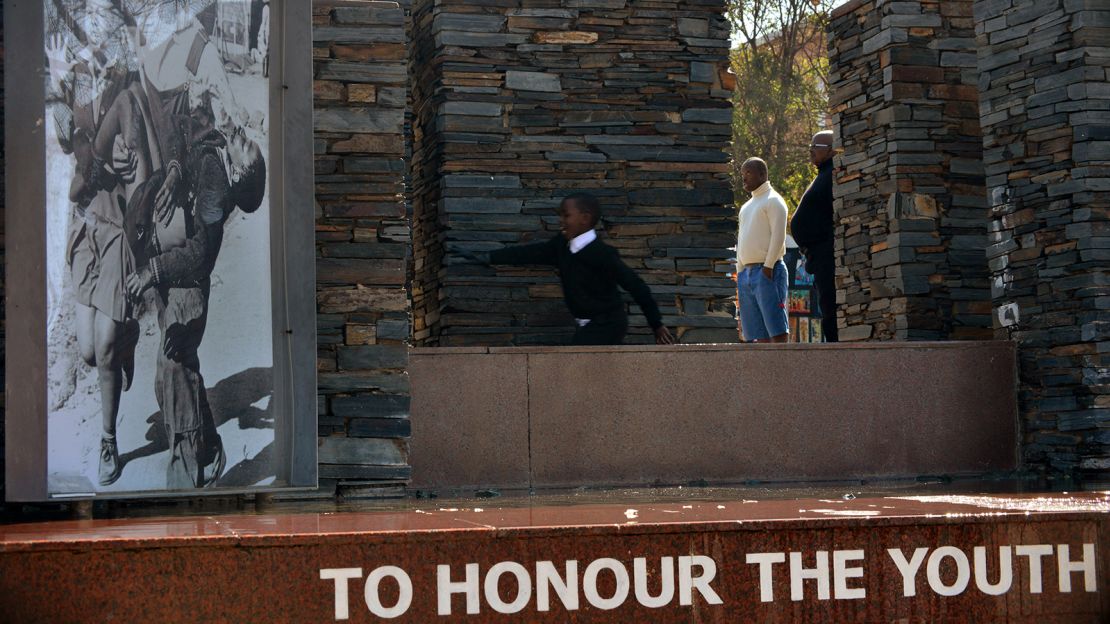
A short walk from the upper end of Vilakazi Street, the Hector Pieterson Memorial remembers the most famous victim of the 1976 uprising in Soweto, when a peaceful student protest demanding better education was crushed by apartheid police.
Hector Pieterson was 13 when he was shot dead and the photo of his body being carried away became an iconic image of the student protests.
The memorial explains what life was like in the township during the dark days of the past, in simple but powerful exhibits. Its gift shop also carries an excellent selection of books on South African history.
Apartheid Museum
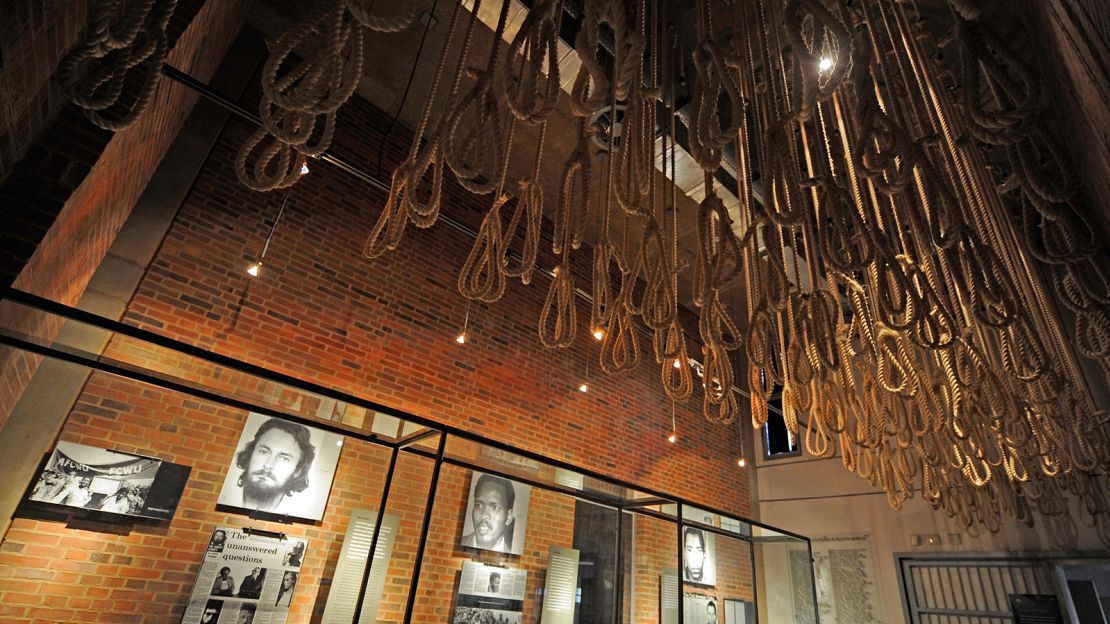
Yes, the museum is a searing look at the devastation that apartheid wrought on South African society, but it’s also a much broader look at the country’s more distant history as well, delving into the conditions that allowed apartheid to emerge.
From the entrance, visitors are invited to put themselves into experience of violent racial segregation, forcing everyone to choose a race as they enter through separate doors.
A room of limp hangman’s nooses pays homage to victims of the state’s executions. Audio and video records bring to life the memories of that era, a past so recent that some of the people featured are still alive.
Apartheid Museum, Northern Park Way and Gold Reef Rd, Johannesburg
Neighbourgoods Market in Braamfontein
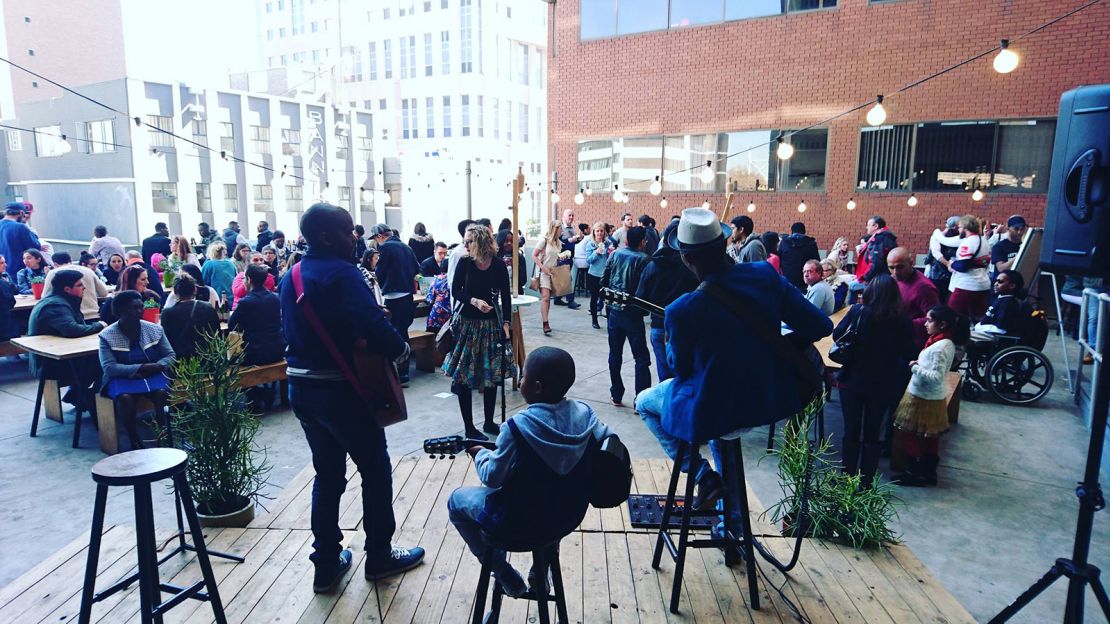
Every Saturday in a parking garage in Braamfontein, foodies gather around giant paellas, raw oysters, and lots of craft beers.
The Neighbourgoods Market fills two floors with innovative foods from across the city, drawing in students from nearby universities and urban explorers from farther afield.
The market has helped drive the redevelopment in Braamfontein, a neighborhood with a long history as a bohemian and student enclave.
The Neighborgoods Market Johannesburg, 73 Juta Street, Braamfontein, Johannesburg
Wits Art Museum
The University of the Witwatersrand, known widely as Wits and pronounced “Vits” in the Afrikaans way, recently remodeled its art museum with floor-to-ceiling windows that open its displays to the street.
The museum holds a significant collection by African artists, but also hosts international exhibitions, including a major show of Andy Warhol screen prints. Entrance is free, and the museum’s cafe serves one of the most affordable and tastiest lunches in town.
Wits Art Museum, University Corner, Jorissen St & Bertha St, Johannesburg 2050; +27 11 717 1365
Market Theatre
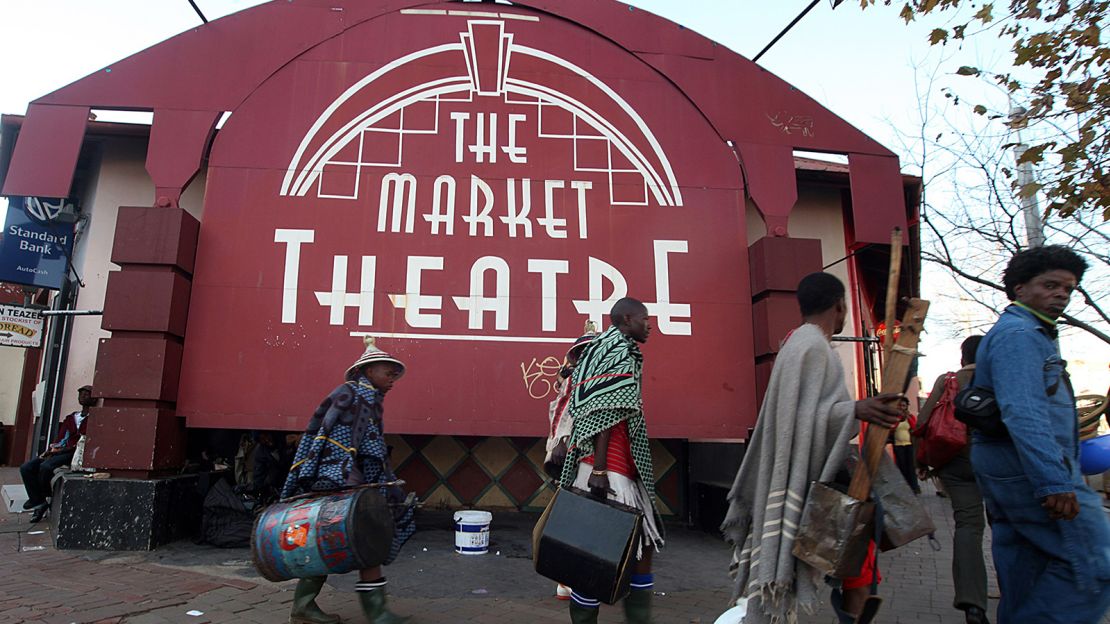
The theater was founded in 1976, at the height of the struggle against apartheid, in what was once a fruit market. Through an unusual snag in apartheid’s web of regulations, it was allowed to employ mixed-race casts, and quickly became known as the “theater of the Struggle.”
Now its stages host revivals of struggle classics, while promoting new work as well. Famous actors still frequent the theater, both on stage and in audiences.
Market also recently finished a painstaking renovation of the Windybrow Theatre, which is based in a Victorian home from the gold rush era that’s now a landmark in the rough neighborhood of Hillbrow.
The Market Theatre, 56 Margaret Mcingana St, Newtown, Johannesburg; +27 (0)11 832 1641
Carlton Tower viewing deck
The tallest building in Africa, Carlton Tower has a 50th floor viewing deck that shows the sweep of the city, from what’s left of the gold rush mine dumps (most have been re-mined into oblivion) to the high-rises of the CBD and the green hills stretching across the northern suburbs and as far as the FNB Stadium (famed as Soccer City during the 2010 World Cup) on the edge of Soweto.
It was once part of a hotel and shopping complex that was among the city’s most prestigious locations. The shopping center remains a hugely popular, if more middle class, shopping venue that is among the busiest in Johannesburg.
Yeoville Dinner Club
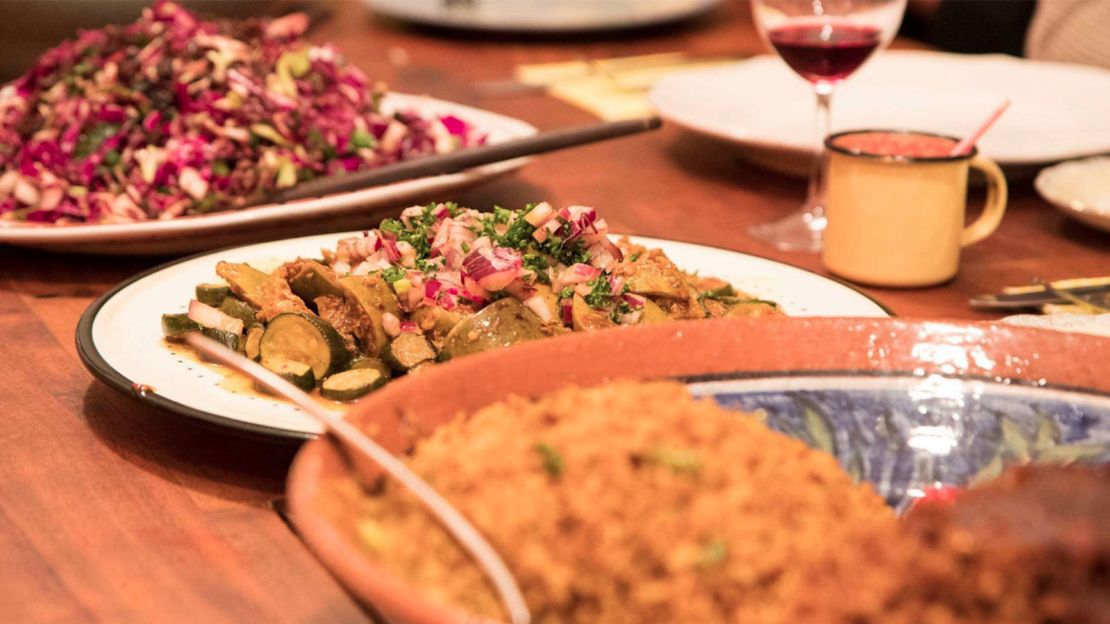
This tiny restaurant has only one table with 18 seats, but it serves the most expansive African menu in the city in a neighborhood that has attracted migrants from across the continent.
Yeoville isn’t part of the artsy, hipster revival that has transformed other parts of Joburg. Its meals takes from what’s fresh in the neighborhood market and pulls from all of the cultures and nations represented on the surrounding streets.
Small groups are seated together as if at a dinner party, and the menu changes constantly.
Yeoville Dinner Club, 24 Rockery St, Yeoville, Johannesburg; +27 (0)83 447 4235
Liliesleaf Farm
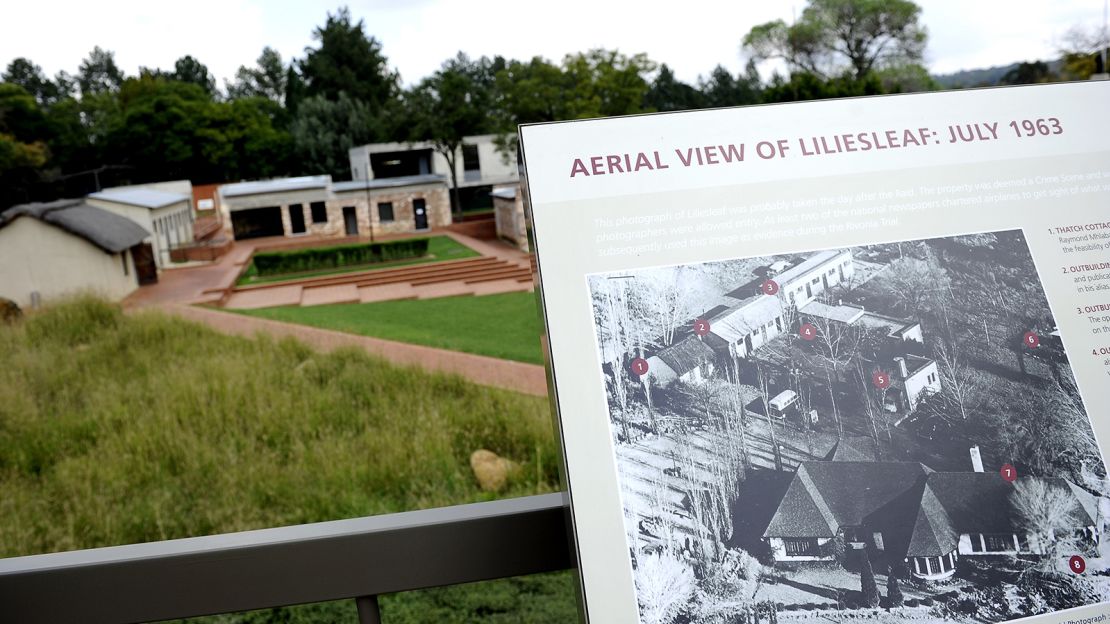
In 1963, police raided Liliesleaf Farm in Rivonia on the outskirts of Johannesburg and arrested leaders of the liberation movement.
That led to the Rivonia Trial where Nelson Mandela (who had been arrested earlier), Walter Sisulu, Govan Mbeki, Andrew Mlangeni, Raymond Mhlaba, Ahmed Kathrada, Elias Motsoaledi and Denis Goldberg were sentenced to life in prison.
Rivonia is now fully swept up in the city’s suburban sprawl, but the farm reopened in 2008 as a museum that explains what life was like in the underground liberation movement.
Liliesleaf Farm, 7 George Ave, Rivonia, Johannesburg
Melville Koppies for hiking
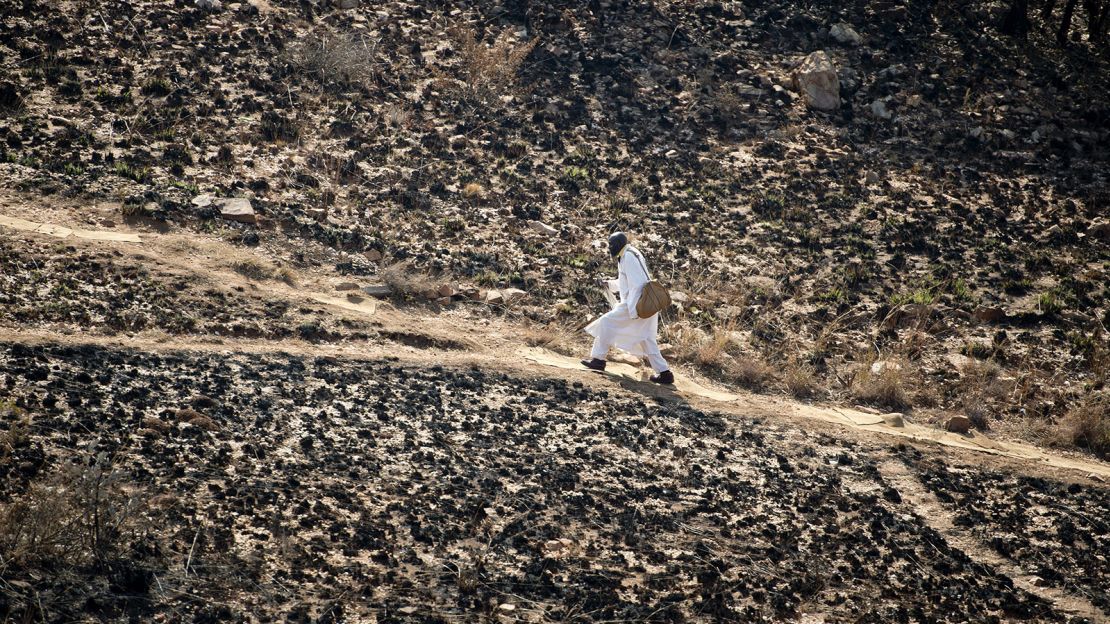
In the middle of the city, the Melville Koppies stretch over 150 hectares with rocky outcropping (those are the koppies) covered with indigenous plants that produce delicate flowers in spring and rugged grasses in winter.
Hikers spend hours along the trails, within view of the city’s skyscrapers. On Sundays, church groups gather for worship in flowing robes with singing and drums that rise over the rocks.
The park also holds an ancient furnace from the Iron Age, making it an unusual natural link from the ancient past to the urban present.
Arts on Main / Maboneng precinct
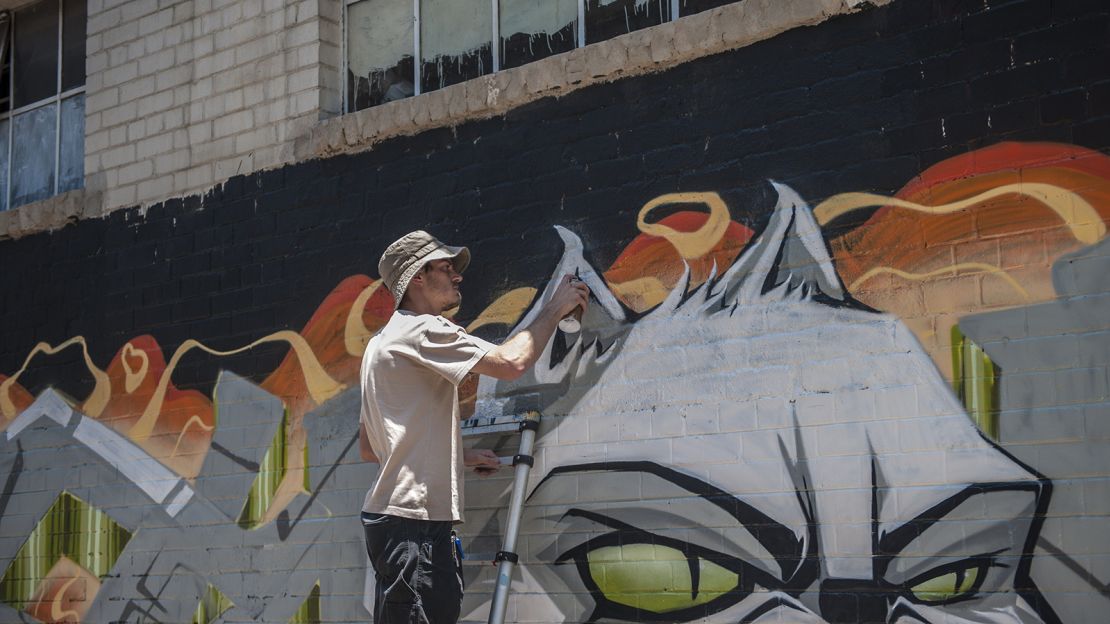
A decade ago, when a Sunday morning market opened in an old liquor warehouse, it was an urban oasis surrounded by car repair shops, light industrial complexes, and derelict buildings.
But that modest start has grown into a massive urban renewal project that has lured top artists like William Kentridge, an art house cinema, young fashion designers and ambitious new chefs.
The neighborhoods new name, Maboneng, means “place of light.” It’s perhaps more accurately a place of exploring, as one of the few neighborhoods in Johannesburg that’s easily traveled by foot along sidewalks that connect an ever-growing range of shops, restaurants and apartments.
Oriental Plaza
A shopping mall unlike any other in the city, Oriental Plaza hosts hundreds of stores that sell everything from spices to curtains to designer brands. It’s on the edge of Fordsburg, the city’s old Indian neighborhood that now welcomes migrants from across the world.
The Plaza was built in the 1970s in an attempt to compensate Indian shop owners after the apartheid government razed a nearby community in its violent drive for racial separation.
The building stands rather oddly apart from the surrounding neighborhood, but has become a popular destination for people from across Johannesburg looking for fair prices and great Indian food.
Oriental Plaza, 38 Lilian Ngoyi St., Fordsburg, Johannesburg
Keyes Art Mile
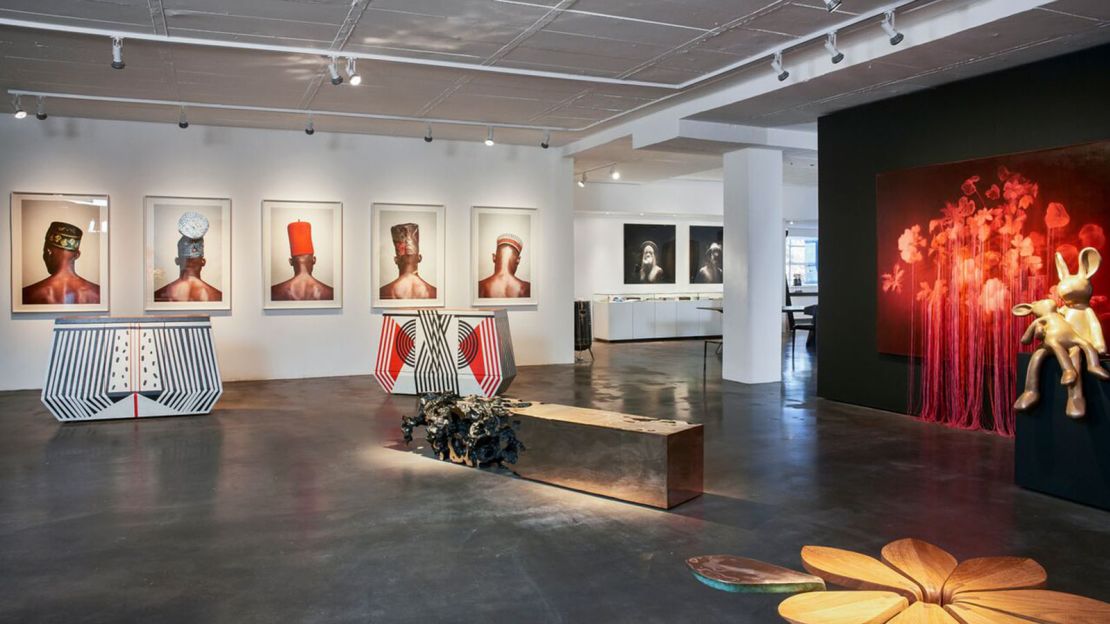
A new collection of shops and restaurants link some of the city’s finest art galleries in the Rosebank neighborhood: Everard Read and its new circular tower Circa, the Goodman Gallery, SMAC, Southern Guild and Whatiftheworld. Upstairs is the exquisite new restaurant Marble.
Then there’s the option of hamburgers and milkshakes at BGR on the ground floor and light lunches at the Milk Bar, which decorated by Amatulli importers with objects from across Africa.
Farther down the block at the corner of Jan Smuts Avenue and Bolton Road is a collection of hipster eateries, including the Bolton Collection, a barbershop bar, and a hidden speakeasy called Sin and Tax.
The galleries stay open late on the first Thursday of each month, becoming destinations for Johannesburg’s beautiful people to see and be seen.
Keyes Art Mile, 19 Keyes Ave., Rosebank, Johannesburg
Soweto Derby

FNB City, the calabash-shaped stadium built for the 2010 World Cup, hosts the country’s most epic soccer matches – the Soweto Derby between the Kaizer Chiefs and the Orlando Pirates.
Loyalty to these crosstown Soweto rivals runs deep, but the atmosphere is celebratory.
For these matches, the stands overflow with music, dancing and costumes – including makarapas, mining hats carved and painted into fantastic shapes.
Buy tickets early. There’s little chance of finding one at the gate.
JoburgPlaces walking tour
The best way to experience Johannesburg’s revival is with a walking tour by JoburgPlaces, led by Gerald Garner, who wrote a fascinating book of the same name.
He presents the stories of the city’s past and present in a way that helps even locals appreciate how dramatically Johannesburg is changing from month to month.
Some tours run on specific themes, from the lighthearted rooftop bars tour to a six-hour walk throughout the inner city. The tours start and end at the new Joziburg Lane complex, an old car storage facility that’s being turned into a foodie hub, market and loft apartments.
Have Dim Sum in the old Chinatown
More recent Chinese arrivals in Johannesburg have settled in a “new” Chinatown in Cyrildene, where streets are packed with Asian grocers, barbers and restaurants.
The original Chinatown was on the city’s west end, and now offers a glimpse into the lives of the first Chinese migrants.
Historic markers along the sidewalks include photos and descriptions of the past, and neighborhood institutions like Sui Hing Hong grocery store and the Swallow’s Inn are still going strong.
A relatively new arrival is Ming Woo at 4 Commissioner Street, which prepares steaming baskets of dim sum. The menu here is something of secret.
Diners who don’t appear to be Chinese won’t be offered the dim sum menu, but it’s totally worth asking for.
Ratz Bar in Melville
Melville attracts a mix of students, artists, and people who like being around them. Like the rest of Johannesburg, the neighborhood has gone through a series of changes that leave it sometimes feeling a bit more empty, sometimes a bit overcrowded.
Right now Melville is back at a high point, with cafes, bookstores and quirky boutiques pulling in a mixed clientele. There’s always been a gay scene along 7th Street, and Ratz Bar is one of the mainstays that has endured through the street’s ups and downs.
It’s friendly, heavy on 80s music, with good bar food. And it’s a great jumping off point for exploring the rest of the neighborhood.
Ratz Bar Melville, 9 7th St., Melville, Johannesburg; +27 (0)11 482 2414
Emirates Airline Park
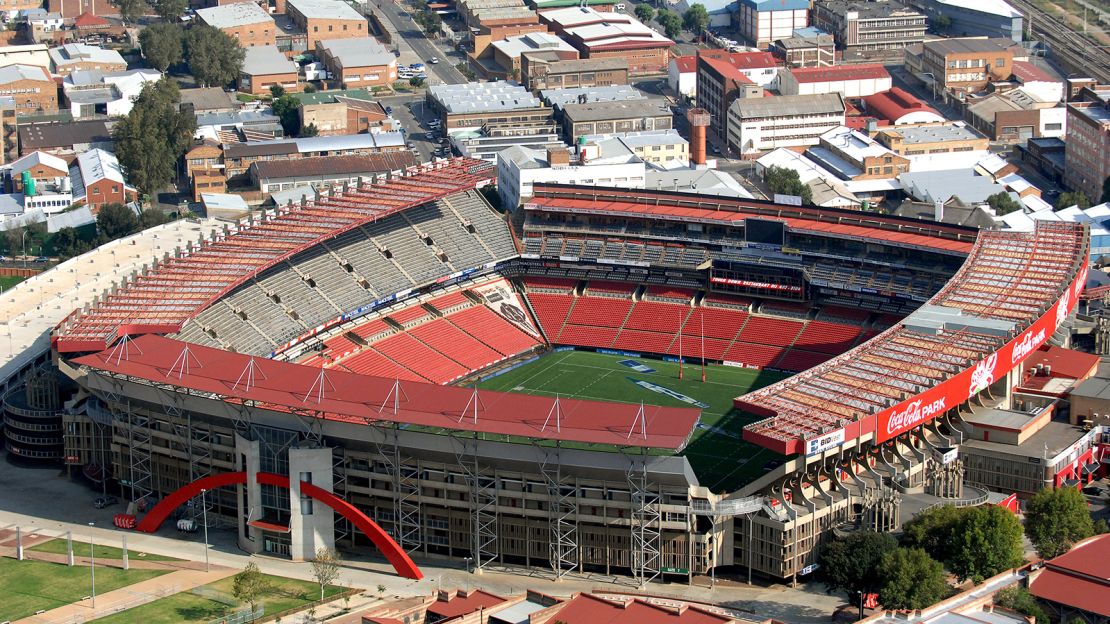
Still popularly known as Ellis Park, this stadium hosted the 1995 rugby World Cup final, when Nelson Mandela donned the Springbok jersey to present the South African team the trophy in what became a symbol of reconciliation after the fall of apartheid. The events were also the inspiration for the 2009 film “Invictus” starring Morgan Freeman.
For visitors, first prize is of course to attend a match, but the stadium also has a museum with a staggering collection of Springbok memorabilia that’s on display weekdays.
READ: Seoul barista transforms coffee into beautiful works of art
Northern Farm
Northern Farm opens its 1,600 hectares to the public on weekends and holidays for cycling, horse riding, hiking and picnics.
Some areas of the farm are actual farmland, but others are open grasslands, clusters of trees, and small reservoirs filled by rivers and canals. Even though it’s close to the city and popular with cyclists, Northern Farm remains relatively unknown to travelers, but is perfect for a quick and quiet getaway from town.
Northern Farm Nature Reserve, R114 & Falkirk Road, Diepsloot
City Central Food Hall
Once the lavish headquarters of Barclays Bank in South Africa,, the building at 85 Commissioner Street, which was empty for years, has reopened as the City Central Food Hall, where vendors prepare innovative meals on weekdays for breakfast and lunch.
Generous portions of smoked meats, gourmet burgers, dim sum, and curries are served up under an enormous skylight in the triple-volume banking hall. Upstairs on the mezzanine, the Brass Bar serves drinks on the balcony and Bridge Books keeps coffee and a collection of African literature by the roof deck.
City Central Food Hall, 85 Commissioner St., Johannesburg
Nirox Sculpture Park
The lush grounds of the Nirox Sculpture Park are only open for exhibitions and events, but it’s so beautiful that it’s worth planning around them for a visit there.
Guests are invited to wander the grounds of what was a trout farm.
Although the Nirox Foundation hosts artist residencies, it’s best known for its annual sculpture fair and its series of outdoor concerts.
Nirox Sculpture Park, 24 Kromdraai Rd, Kromdraai, Krugersdorp; +27 82 854 6963
The Grind Coffee Company
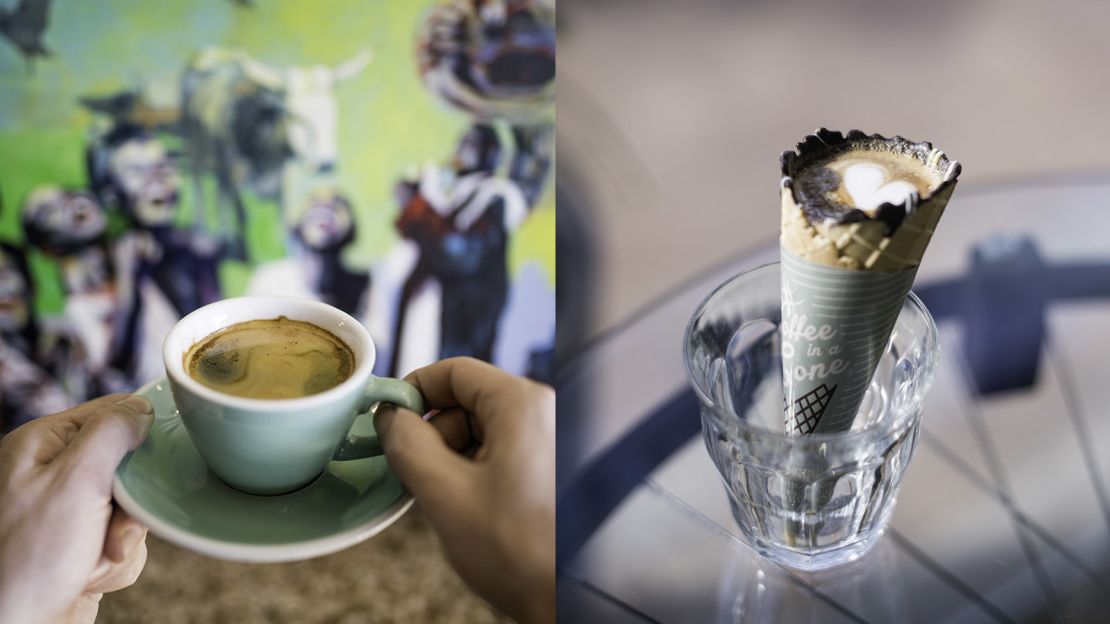
This coffee shop inside a bike shop asks customers if they want a cup or a cone, but it’s espresso, not ice cream, that’s on offer.
They line the inside of ice cream cones with a thick layer of chocolate, then carefully pour the coffee into it. The hot drink melts the chocolate into a sweet drink that tastes delicious, but isn’t meant to linger over.
Drink the coffee before all the chocolate melts, or the cone will go soggy and start to leak.
The Grind Coffee Company, 34 Whiteley Road, Melrose Arch, Johannesburg; +27 (0) 72 754 8705
Gandhi House
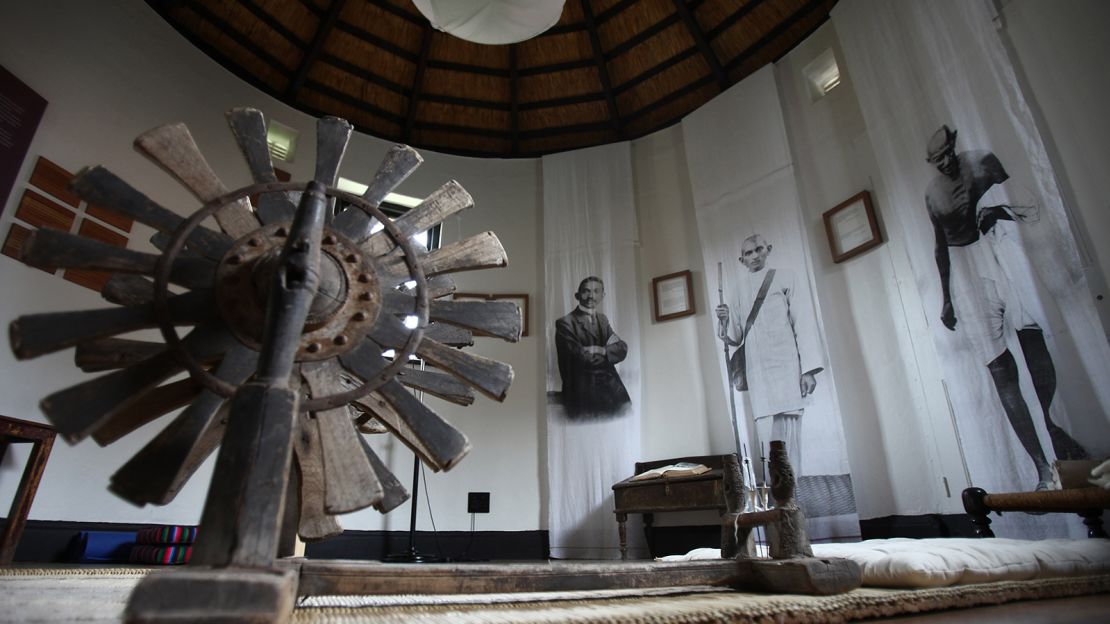
A century ago, Mahatma Gandhi lived in Johannesburg, where his encounters with racism helped inspire his philosophy of passive resistance, or Satyagraha.
His one-time lodgings are now a guest house and museum known as Satyagraha House, where visitors can go on a tour or sleep in one of seven rooms of the home designed by architect Hermann Kallenbach for Gandhi and himself.
It recently underwent a simple but gorgeous restoration, and offers yoga and meditation in the garden, with vegetarian meals for overnight guests.
Satyagraha House, 15 Pine Road & Garden Road, Orchard, Johannesburg
Fashion District
Johannesburg’s historic garment district has become revitalized with a more traditionally African design sense. The Fashion District store (109 Pritchard Street) supplies tailors and designers, whose work is on display in the surrounding streets.
Next door, Studio 109 has a staggering selection of traditional shweshwe prints, which get used as modern finishes in shops like Urban Zulu, which began nearby but has opened branches across the city.
Origins Center
Top South African artists created the displays for this museum which interprets the fossil findings that have cast light on the earliest evolution of humanity – found just outside the city.
The museum is interactive in a way geared more towards adults, and explores the beliefs and culture of the region’s earliest inhabitants, the San Bushmen.
Origins Center, Yale Road & Enoch Sontonga Avenue, Johannesburg
Maropeng in the Cradle of Humankind
The remains of some of humanity’s earliest ancestors were discovered on the outskirts of Johannesburg, in a region now preserved as the Cradle of Humankind.
Maropeng visitor’s center explains evolution from the first life on Earth to modern humans, taking care to deconstruct the racist notions that once denied Africa’s role as the birthplace of humanity.
The buildings were designed to blend into the landscape. Nearby caves hold active dig sites, some also open to visitors.
Maropeng, just off the R563 Hekpoort Road, Sterkfontein; +27 (0)14 577 9000
The Orbit jazz club
A landmark on Johannesburg’s music scene, the Orbit showcases the best in jazz from South Africa and around the region.
The club hosts poetry nights, and periodic cocktails with scientists, for intimate discussions with South Africa’s brightest minds.
The Orbit, 81 De Korte St, Bramfontein, Johannesburg; +27 (0)11 339 6645
Editor’s note: An earlier version of this story misstated that Nelson Mandela was arrested in a 1963 raid on Liliesleaf farm. He was already in custody at the time.
Griffin Shea is a writer based in Johannesburg, South Africa, where he also runs Bridge Books – an independent bookstore in an old, columnated bank building.
When you use affiliate links on this page, CNN may receive revenue. CNN is not responsible for the goods or services provided through such links.





















